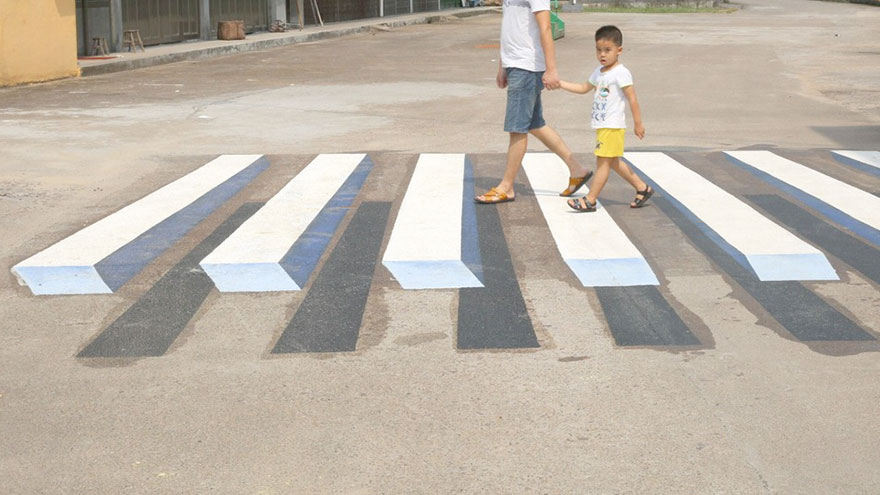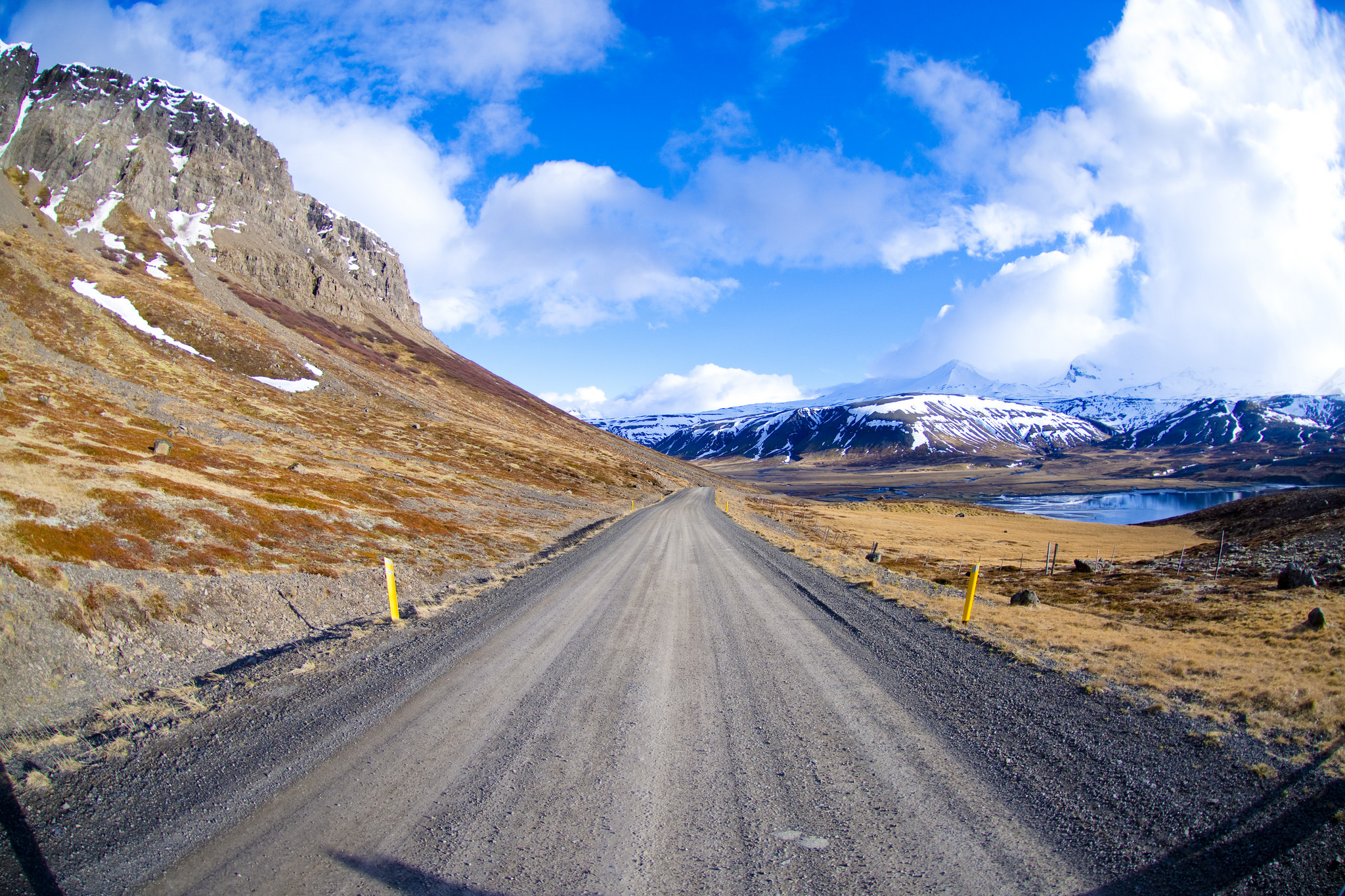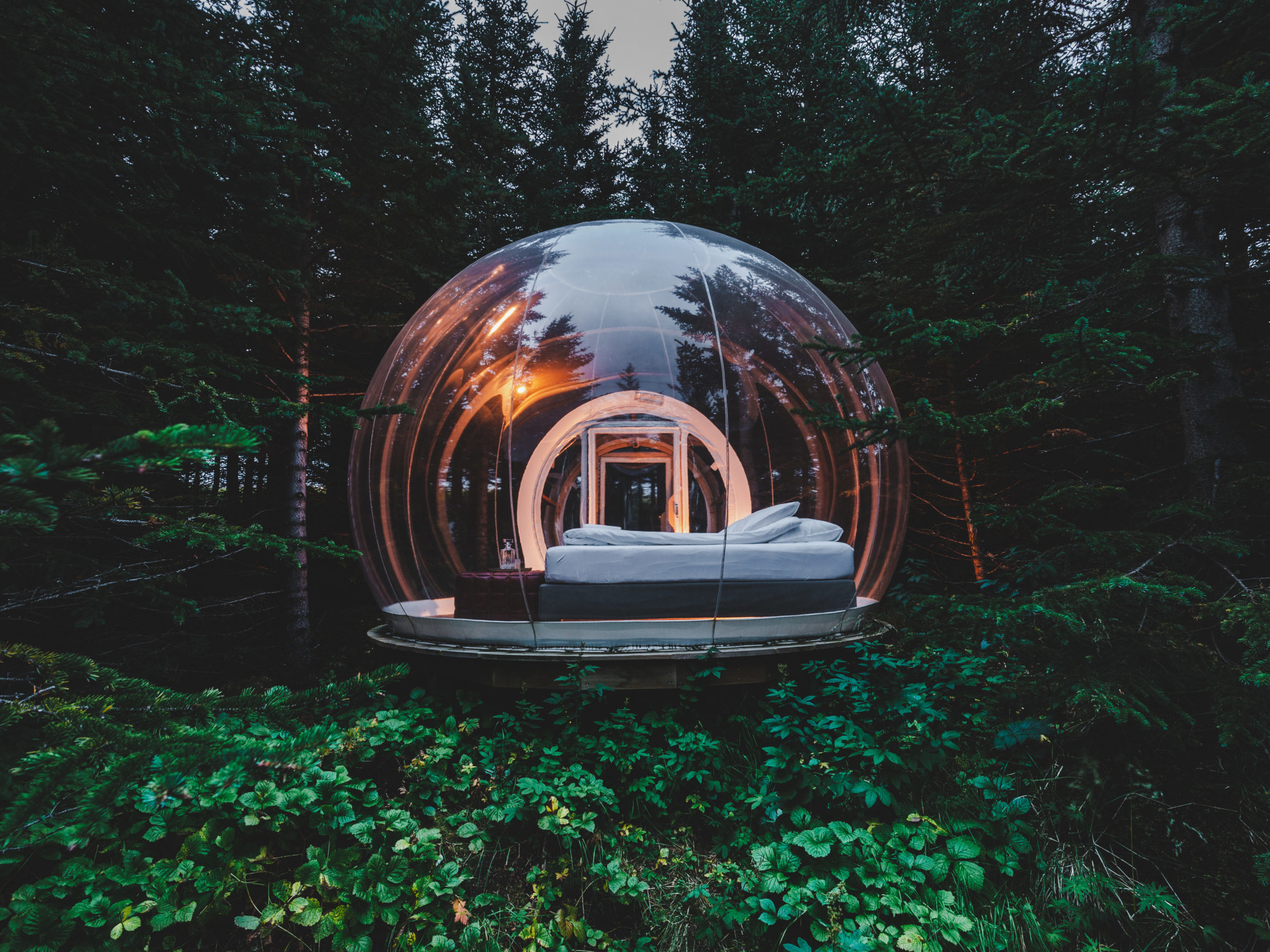Optical Illusion Crossing in Iceland
Text by Sonia Nicolson
Traffic accidents in Iceland
According to the Icelandic Transport Authority (ICETRA), there were fewer fatal and serious traffic accidents across Iceland in the first ten months of 2017 than during the same period in recent years. There was a 21% decrease in serious injuries or fatalities caused by traffic accidents in Iceland between 2016 and 2017. 157 serious injuries or fatalities in the first ten months of 2017, and a significantly higher 204 within the same period of 2016.
Welcome Developments
ICETRA Public Relations Manager, Þórhildur Elínardóttir says the decrease is a welcome development and a result of changes that began in 2013. The main improvements have been in the education of young drivers with a more comprehensive training program and prevention efforts helping new drivers drive safely and be more aware of potential dangers.
Despite the rise in tourist numbers, accidents involving foreign drivers has reduced. However, accidents involving cyclists have increased and was estimated at 150 accident in 2017. With new efforts to improve driving education, awareness of potential hazards and other methods to prevent accidents, Iceland is taking to new projects to curb their fatal and serious traffic accident numbers.
Street Art Ísafjörður
Ísafjörður, the small fishing town in Icelands Westfjords, is the latest destination to introduce an ingenious way to slow drivers down when approaching a pedestrian crossing. This 3D artwork creates a clever floating zebra crossing which is painted on the road and gives the illusion that the white stripes are floating above the ground and obstructing the road.

Photo by MotoringSearch
Controlling Speed
The town of Ísafjörður has the standard speed limit of 30 kmh (18.6 mph) set but residents felt this was still simply too fast. The streets are narrow in this small village and residents wanted to find a way to slow motorists down further. The local council met to discuss ideas. Ralf Trylla, the Icelandic Environmental Commissioner was inspired when he came across a similar optical illusion drawn in New Delhi, India.
Painted Optical Illusion Crosswalk
This street painting project was led by Gautur Ívar Halldórsson, the manager of Vegmálun GÍH, a road painting company which created the crosswalk located in Ísafjörður in northwest Iceland.
Self taught, Gautur Ívar and Ralf Trylla practiced their 3D painting skills whilst waiting the few weeks it took for all necessary permits from the Transport Authority and Police to come through so work could start. From above, the white lines look like columns but as you approach them at street level you see the optical illusion come to life and they appear to be hovering.
Drivers and Pedestrians
This creative design gives the impression that the pedestrians crossing the road are walking on air. The idea is that drivers approaching the crossing will see the 3D artwork and think it looks like there is an obstacle in the road, and will therefore slow down. The aim is to make drivers lower their speed to reduce the risk of accidents in this pedestrian area.
The Inspiration
Crossing like this one are popping up across the globe in India, South Africa, Kyrgyzstan and China, but this form of street art is not the only unusual method being used to slow down traffic for pedestrian crossings. In Russia, road safety experts used a very unsubtle method of employing topless women to hold speed limit signs in an aim to get drivers to slow down – perhaps not the best method to try here in Iceland.
In the UK there is discussion of scrapping speed bumps as part of the government’s dramatic plans to curb pollution. It emerged that these publicly hated humps are not only stressful but bad for the environment as slowing down to cross them actually causes a higher level of nitrogen dioxide and so pollutes the atmosphere.

Photo by BoredPanda
Delhi’s First 3D Zebra Crossing
New Delhi Municipal Council’s (NDMC) newly installed crossing, painted at central Delhi’s Rajaji Marg, has helped reduce the average speed on this section of road down to 30 km per hour. “The new 3D zebra crossing has become a sight of amusement for commuters. Cars inevitably slow down and there is also excitement among pedestrians to use it,” said a senior traffic official.
This black and yellow crossing, painted as a trial project, had the aim to help make the city roads safer. New Delhi officials are now discussing more 3D pedestrian crossings to be created across the city to help make roads safer. “We did not know how people would respond to such 3D pedestrian ways, but the response is overwhelming. Our aim is to make the NDMC area a people-friendly space and such measures will ensure safety for pedestrians as well as drivers,” said Naresh Kumar, NDMC chairperson.
The average speed on this section of road is 50km/hr however the wide and well maintained roads make for the ideal place for drivers to speed through. Traffic officials have now monitored the crossing and an average speed of 30km/hr was recorded. “If you are driving, from a distance the crossing looks like the road has been dug up or is elevated, this automatically makes the driver slow down. During the day you will see pedestrians hopping through the painted blocks,” the official said.
It took Yogesh Saini, founder of Delhi Street Art, 3 days to paint the crossing in collaborated with NDMC. He said, “The entire crossing was painted in the morning during rush hour.”
A senior NDMC official said that five other locations have been identified where the crossing will come up in the coming months. “Instead of repainting the zebra crossings in black and white, we will replicate the 3D design,” the official.

Photo by Conor Lawless
Traffic on Ring Road One
Traffic on Icelands Ring Road is usually at its heaviest in July but it reached a record high last year, said the Icelandic Road and Coastal Administration (IRCA), with a record of 108,000 vehicles passing the 16 IRCA counters on the Ring Road daily. This number has increased over the past decade from 82,000 vehicles, meaning an increase of around 30% since 2007.
However, the increase in traffic between years is slowing down with an increased of only 7.3% in July 2017 compared to the pervious year. The greatest increase in traffic is in the north of Iceland with around 12% more visiters, and the South Coast is experiencing a growth of around 3.8%. Indications are that traffic between 2016 and 2017 increased 9% overall, which is a smaller increase than in the previous year.
The Future for Roads in Iceland
The local council has not decided if it will implement more 3D crosswalks like this one in Ísafjörður, but if the experiment proves successful more may follow.


